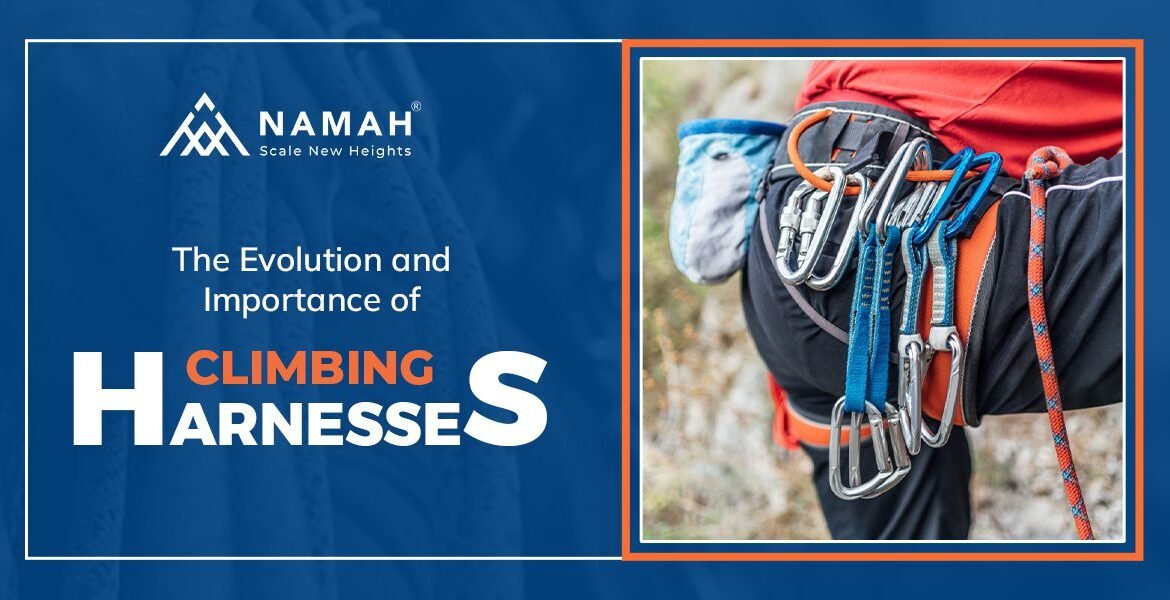Introduction to Climbing Harnesses
Climbing harnesses are a pivotal piece of equipment in the arsenal of any climber, whether amateur or professional. These devices not only ensure safety but also enhance the overall climbing experience by providing support and comfort.
Understanding the Basics: What Makes a Good Climbing Harness?
A climbing harness must excel in three key areas: safety, comfort, and functionality. The primary function of a harness is to secure the climber to the climbing rope, thus preventing falls. However, the comfort of the harness is crucial as it directly affects the climber’s ability to perform and endure long sessions. Features like adjustable leg loops, padded waistbands, and strategically placed gear loops contribute significantly to the usability and functionality of the harness.
The Role of Innovation in Harness Design
The use of lightweight, durable materials ensures that the harnesses can withstand the rigors of rugged climbing environments while maintaining comfort. Innovations such as self-locking buckles, wear indicators on webbing, and reinforced tie-in points enhance the safety features of these essential tools.
Focus on Safety: Key Features of Namah Ropes’ Harnesses
Safety is the paramount concern when it comes to climbing harnesses. Each harness must undergo rigorous testing to ensure it can handle extreme loads and stress. Features such as double-back buckles and full-strength haul loops are standard, providing climbers with confidence in their gear.
Exploring Types of Climbing Harnesses
Specialty Harnesses for Different Climbing Disciplines
Companies offer a diverse range of climbing harnesses tailored to various climbing disciplines. Each type is designed with specific features that address the unique needs of different climbing environments, from indoor gyms to rugged alpine expeditions.
Sport Climbing Harnesses: Lightweight and Streamlined
For sport climbers, harnesses that prioritize mobility and comfort without compromising safety are preferred. These harnesses are typically lighter, with fewer gear loops and a more streamlined design to facilitate quick movements and minimize interference.
Traditional Climbing Harnesses: Durability and Versatility
Traditional climbing harnesses are built for versatility and durability. They come equipped with multiple gear loops that can handle a large number of equipment pieces, making them ideal for long multi-pitch climbs where various types of gear are required.
Adjustable Leg Loops and Enhanced Comfort Features
Adjustability is a key feature in harness designs, allowing climbers to tailor their fit according to personal preference and seasonal clothing changes. Enhanced padding in the waistbelt and leg loops also ensures comfort during extended periods of hanging or belaying, crucial for longer climbing sessions.
Ice Climbing Harnesses: Built for the Extreme
Ice climbing harnesses are designed to withstand extreme cold and abrasive environments. These harnesses feature reinforced tie-in points and are compatible with ice-screw racking systems, providing reliability and ease of access to equipment in icy conditions.
Advanced Safety Features and User Feedback
Prioritizing Safety in Harness Design
Manufacturers can take safety to the next level by incorporating advanced features that enhance the reliability and security of their climbing harnesses. These features, which are designed to meet the rigorous demands of various climbing disciplines, ensure that climbers remain secure regardless of the challenges they face.
Reinforced Tie-In Points and Wear Indicators
One of the critical safety features of harnesses is the reinforced tie-in points, which endure repeated use and significant stress. These points are crucial for preventing harness failure during climbs. Additionally, wear indicators—visible threads or markings that appear as the harness material degrades—alert climbers when it’s time to replace their gear, promoting safety through timely maintenance.
Harness Testing: Rigorous Standards and Real-World Applications
Companies must adhere to stringent testing protocols to ensure their harnesses can withstand extreme conditions. This section details the types of tests performed, from load testing to environmental exposure, illustrating the company’s commitment to quality and safety.
Feedback from the Climbing Community
User feedback is invaluable for continuous improvement. Reviews from both amateur and professional climbers frequently highlight the comfort, durability, and, most importantly, the trust in the safety features of the equipment. Stories from climbers who have experienced falls and relied on the harness to protect them are powerful testimonials to the effectiveness of a rope’s design philosophy.
Shaping the Future of Climbing Harness Technology
Leveraging Feedback for Innovation
Companies must deeply value the feedback from their user community, integrating insights from real-world use to drive product evolution. Customer feedback directly influences the continuous refinement and innovation of climbing harnesses, ensuring they meet the evolving needs of climbers.
User-Driven Design Improvements
Engagement with the climbing community has led to several significant improvements in harness design. Adjustments in harness ergonomics, better load distribution, and the integration of more intuitive adjustment mechanisms are a few examples of enhancements inspired by user experiences.
Future Trends in Harness Technology
Looking ahead, Namah Ropes is set to pioneer further innovations in climbing harness technology. Emerging trends include the incorporation of smart technology, such as embedded sensors to monitor stress and wear, and the use of sustainable materials that provide the same level of safety and durability while reducing environmental impact.
The Role of Emerging Technologies
The adoption of advanced materials and smart technologies signifies a future where climbing harnesses not only offer safety but also connectivity, providing real-time data to climbers and rescue teams. Such innovations could revolutionize the way safety is monitored and managed in climbing sports.




